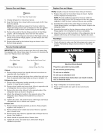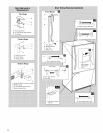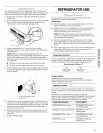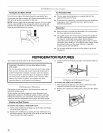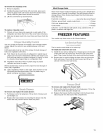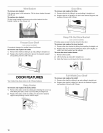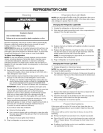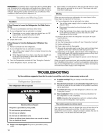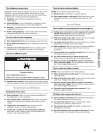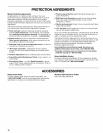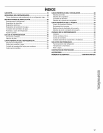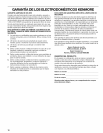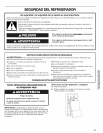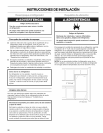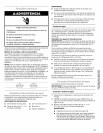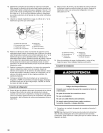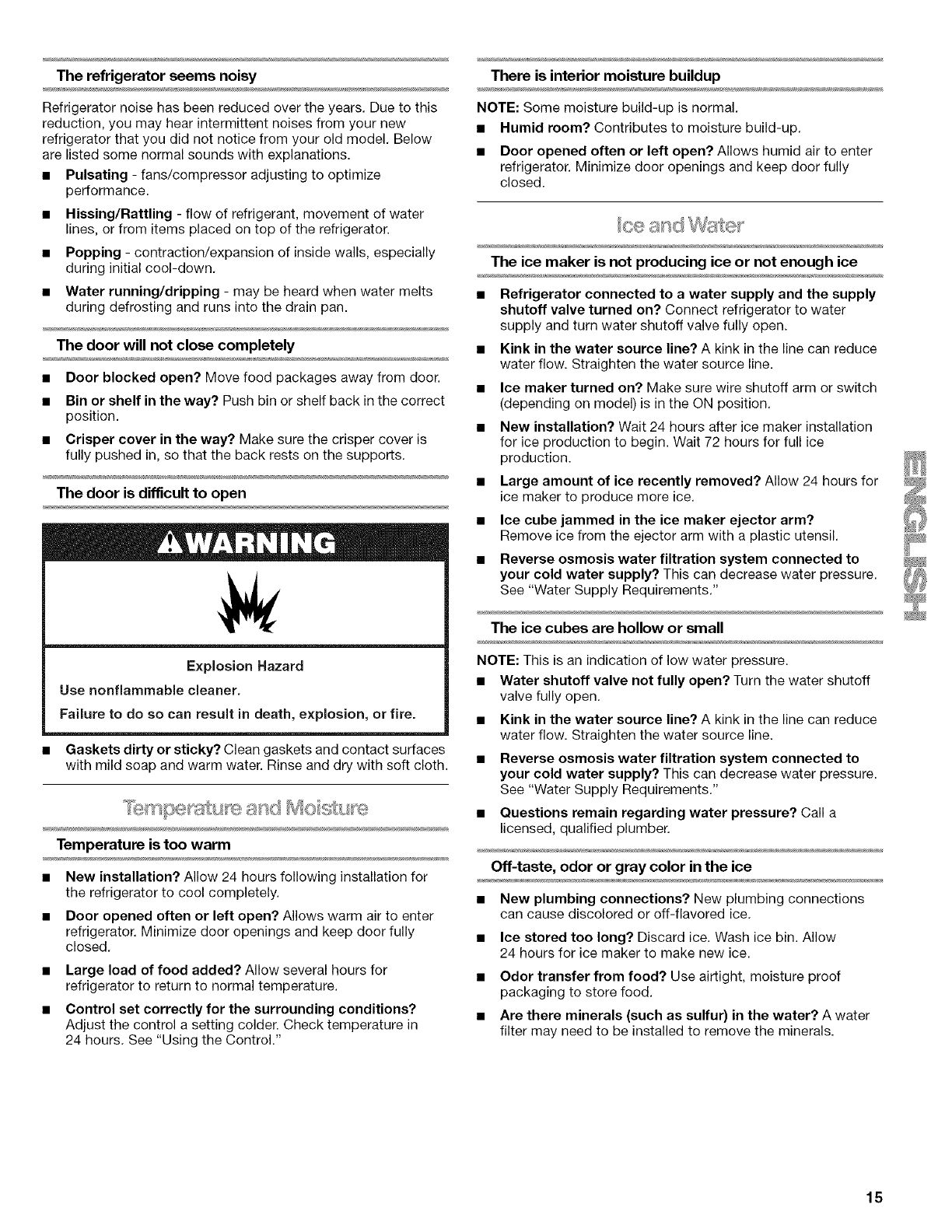
The refrigerator seems noisy
Refrigerator noise has been reduced over the years. Due to this
reduction, you may hear intermittent noises from your new
refrigerator that you did not notice from your old model. Below
are listed some normal sounds with explanations.
• Pulsating - fans/compressor adjusting to optimize
performance.
• Hissing/Rattling - flow of refrigerant, movement of water
lines, or from items placed on top of the refrigerator.
• Popping - contraction/expansion of inside walls, especially
during initial cool-down.
• Water running/dripping - may be heard when water melts
during defrosting and runs into the drain pan.
The door will not close completely
• Door blocked open? Move food packages away from door.
• Bin or shelf in the way? Push bin or shelf back in the correct
position.
• Crisper cover in the way? Make sure the crisper cover is
fully pushed in, so that the back rests on the supports.
The door is difficult to open
Explosion Hazard
Use nonflammable cleaner.
Failure to do so can result in death, explosion, or fire.
• Gaskets dirty or sticky? Clean gaskets and contact surfaces
with mild soap and warm water. Rinse and dry with soft cloth.
Temperature is too warm
• New installation? Allow 24 hours following installation for
the refrigerator to cool completely.
• Door opened often or left open? Allows warm air to enter
refrigerator. Minimize door openings and keep door fully
closed.
• Large load of food added? Allow several hours for
refrigerator to return to normal temperature.
• Control set correctly for the surrounding conditions?
Adjust the control a setting colder. Check temperature in
24 hours. See "Using the Control."
There is interior moisture buildup
NOTE: Some moisture build-up is normal.
• Humid room? Contributes to moisture build-up.
• Door opened often or left open? Allows humid air to enter
refrigerator. Minimize door openings and keep door fully
closed.
ce
The ice maker is not producing ice or not enough ice
• Refrigerator connected to a water supply and the supply
shutoff valve turned on? Connect refrigerator to water
supply and turn water shutoff valve fully open.
• Kink in the water source line? A kink in the line can reduce
water flow. Straighten the water source line.
• Ice maker turned on? Make sure wire shutoff arm or switch
(depending on model) is in the ON position.
• New installation? Wait 24 hours after ice maker installation
for ice production to begin. Wait 72 hours for full ice
production.
• Large amount of ice recently removed? Allow 24 hours for
ice maker to produce more ice.
• Ice cube jammed in the ice maker ejector arm?
Remove ice from the ejector arm with a plastic utensil.
• Reverse osmosis water filtration system connected to
your cold water supply? This can decrease water pressure.
See "Water Supply Requirements."
The ice cubes are hollow or small
NOTE: This is an indication of low water pressure.
• Water shutoff valve not fully open? Turn the water shutoff
valve fully open.
• Kink in the water source line? A kink in the line can reduce
water flow. Straighten the water source line.
• Reverse osmosis water filtration system connected to
your cold water supply? This can decrease water pressure.
See "Water Supply Requirements."
• Questions remain regarding water pressure? Call a
licensed, qualified plumber.
Off-taste, odor or gray color in the ice
• New plumbing connections? New plumbing connections
can cause discolored or off-flavored ice.
• Ice stored too long? Discard ice. Wash ice bin. Allow
24 hours for ice maker to make new ice.
• Odor transfer from food? Use airtight, moisture proof
packaging to store food.
• Are there minerals (such as sulfur) in the water? A water
filter may need to be installed to remove the minerals.
15



